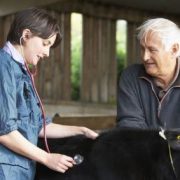Early warning scores in the NHS: could they support early detection of deteriorating veterinary patients?
Early warning scores in the NHS: could they support early detection of deteriorating veterinary patients?

Requires membership/payment
This article can be accessed via RCVS Knowledge Library Membership (click here).
In our edition of: Apr 2019
In our categories of: practice management
our summary:
Ballantyne, H. (2019) Early warning scores in the NHS: could they support early detection of deteriorating veterinary patients? Veterinary Nursing Journal, 34 (2), pp. 48-52
This article gives an introduction to the National Early Warning System (NEWS) used in the NHS and considers its application in veterinary practice.
An area of common practice in both human and veterinary nursing is monitoring the patient’s clinical condition through measurement of physiological parameters. Nurses must be able to interpret the meaning of these physiological measurements to establish the clinical stability of the patient. More importantly, they need to spot changes in these parameters that may give an early indication of the deterioration of the patient enabling interventions to take place as soon as possible.
The NEWS is a clinical tool, rolled out in the NHS in 2012, to improve the clinical outcome of patients. A modified version, NEWS2 was introduced in 2017. NEWS is an aggregate- weighted system which measures six physiological parameters: respiration rate, oxygen saturation, systolic blood pressure, pulse rate, level of consciousness and temperature, and gives each a score with the magnitude of the score reflecting how far the parameter deviates from the norm. As a result early signs of deterioration can be identified, patients reassessed and interventions made in a timely way.
Evidence suggests that implementation of NEWS increases the level of patient observation thus detecting those patients at risk of deterioration at an early stage.
The author considers the usefulness of NEWS in veterinary practice where nurses are more likely to be assessing a diverse range of species and conditions. Areas where aspects of the tool could be useful to veterinary nurses are highlighted. The author suggests that a modified NEWS tool may be helpful, with threshold ranges assigned on an individual basis to patients and their associated condition. The author emphasises that NEWS might be complementary to, but must not replace, clinical judgement.
This paper provides a useful overview of the benefits, and limitations, of an early warning scoring (EWS) system in human healthcare. The development of a validated EWS for veterinary patients might be a useful addition to the tools available in veterinary practice.
Image copyright attribute: Yuriy Klochan
Join the discussion
We encourage discussion on all material highlighted in each edition of inFOCUS. Use the button below to join the conversation on Twitter and include your comment in the feed for this issue.




Leave a Reply
Want to join the discussion?Feel free to contribute!